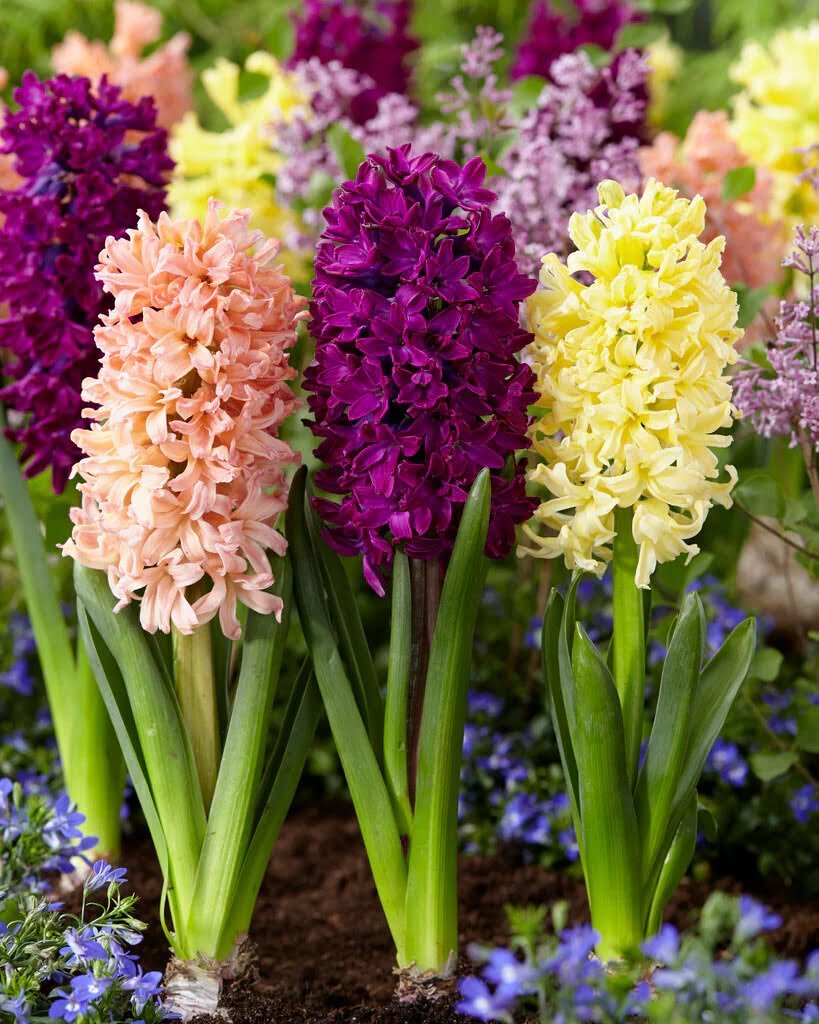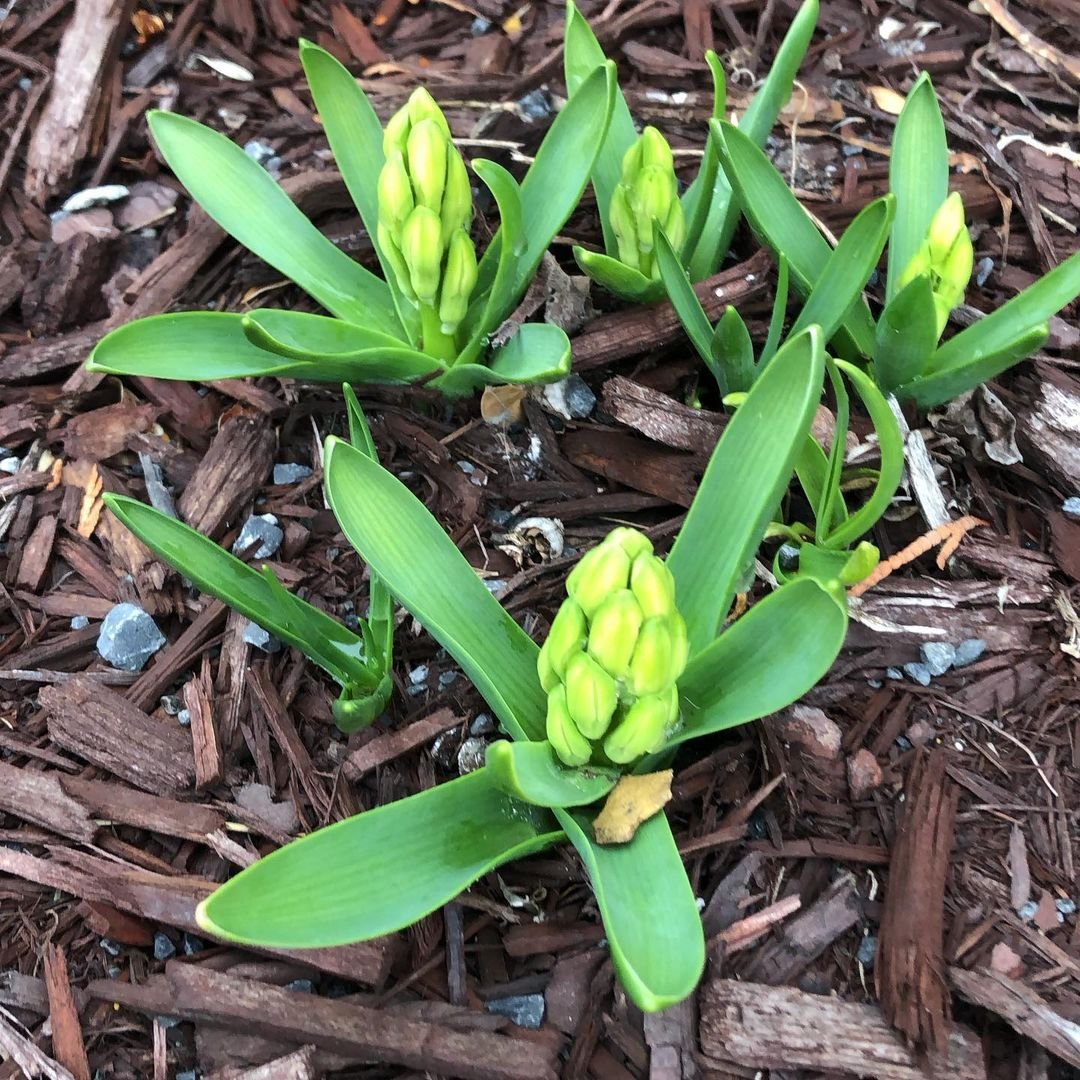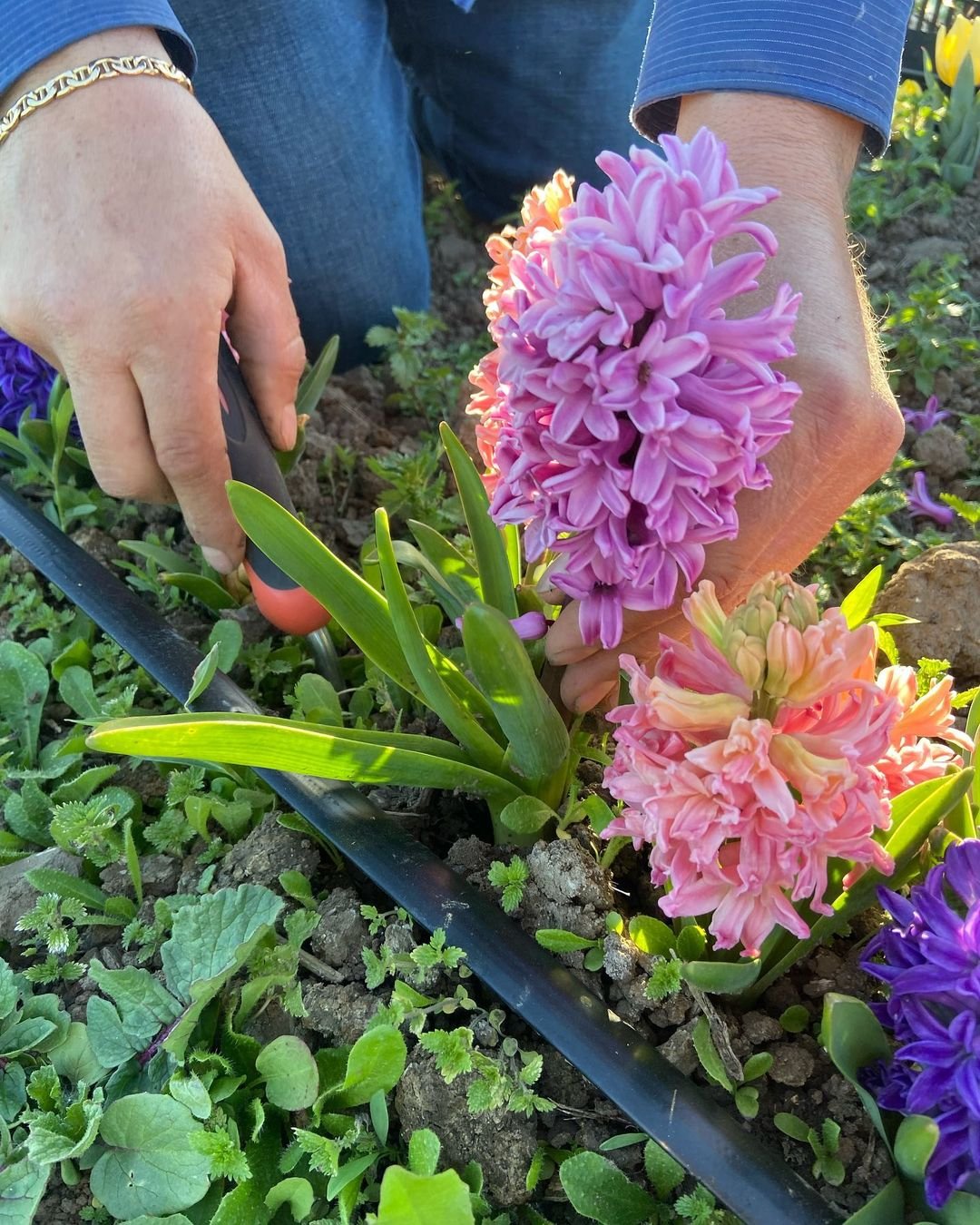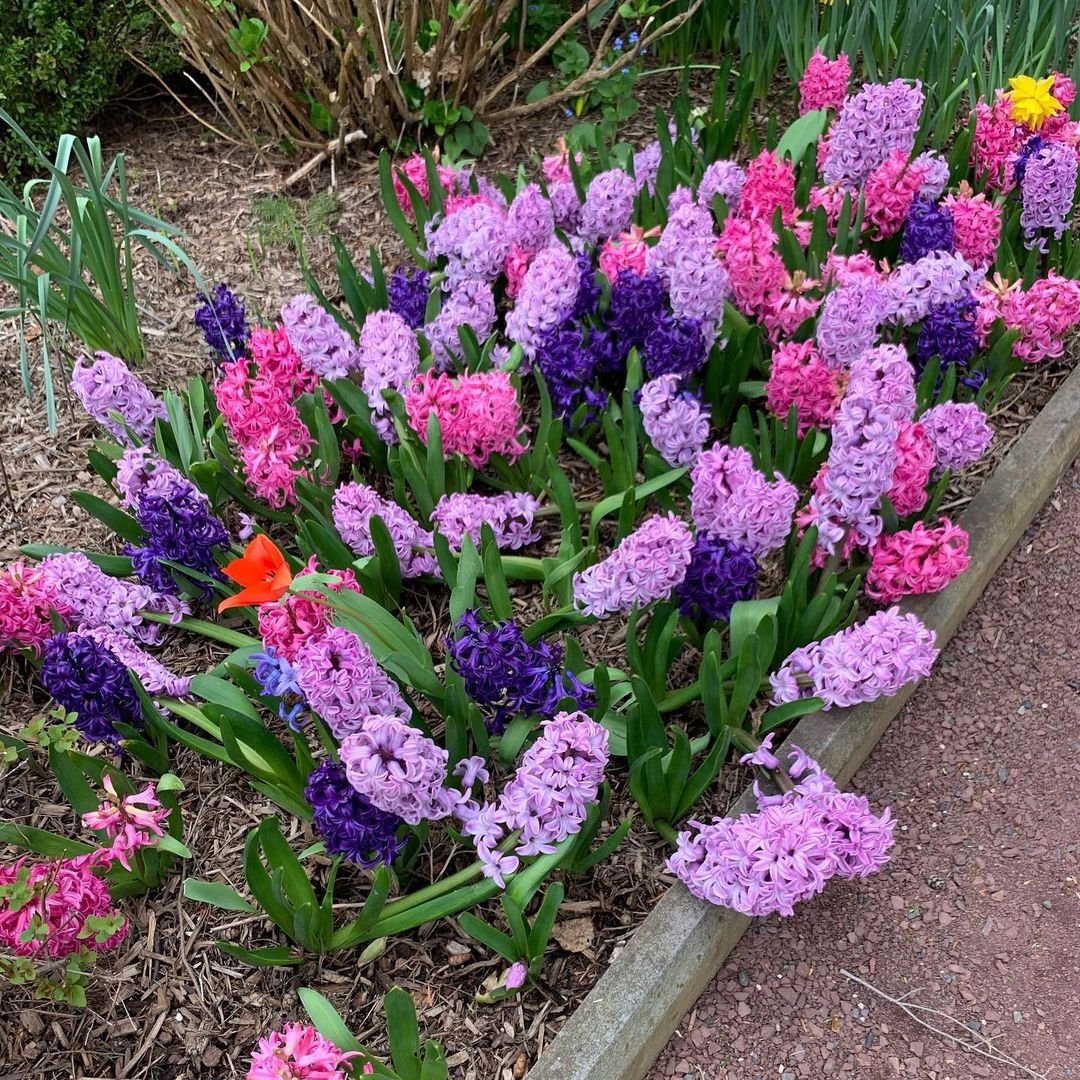Discover essential planting and growing tips for Hyacinth flowers to ensure a vibrant and fragrant garden. Learn expert advice on soil preparation, watering, fertilizing and seasonal care for stunning hyacinth blooms.
When those first fragrant blossoms appear each spring, it’s a sure sign winter is finally over And few flowers announce the season quite like the classic Hyacinth Flowers. With their thick clusters of tiny bells and intoxicating perfume, these spring bulbs are a beloved harbinger of warmer days.
Hyacinth flowers come in a stunning array of colors, from pastel pinks and whites to rich purples, blues and even sunny yellows. Plant a rainbow of hyacinth bulbs and you’ll be treated to an eye-popping flower display complemented by their signature sweet fragrance.
If you’ve been considering adding some hyacinth bulbs to your own landscape, you’ll want to read these essential tips for growing success and reaping those showy blooms year after year.
Here’s a concise information chart about the Hyacinth flower based on your specifications:
| Aspect | Information |
|---|---|
| Botanical Name | Hyacinthus orientalis |
| Common Name | Hyacinth |
| Plant Type | Bulb |
| Zones | USDA Zones 4-8 |
| Sun Exposure | Full sun to partial shade |
| Soil Type | Well-drained, fertile |
| Watering | Regular, moderate |
| Growth Habit | Upright, clumping |
| Height/Spread | 6-12 inches tall, 3-6 inches wide |
| Special Features | Fragrant blooms in early spring, various colors |
What are Hyacinth Flowers?

Hyacinths (genus Hyacinthus) are small, spring-blooming perennial bulbs with origins tracing back to the eastern Mediterranean. These have been prized garden ornamentals for their thick, upright flower spikes and heavenly perfumes for centuries.
While over 30 hyacinth species exist, most modern hyacinths stem from just three varieties:
- Common hyacinth (Hyacinthus orientalis) – The familiar Dutch hyacinth with dense, elongated clusters in shades like pink, blue, white and lavender.
- Grape hyacinth (Muscari spp) – Also called “baby’s breath,” these tiny hyacinths feature adorable little purple/blue spikelets.
- Wood hyacinth (Hyacinthoides hispanica) – Star-shaped violet-blue blooms that naturalize easily in wooded areas.
No matter the variety, all hyacinth bulbs produce their fragrant flower clusters atop upright green stalks of strappy foliage sprouting in early spring. Most average 6-12 inches tall.
Growing Hyacinth Flowers

As with other spring bulbs like tulips and daffodils, hyacinths should be planted in fall for their bloom cycle to initiate properly. Here’s how to get started growing hyacinth flowers in your own yard.
When to Plant
- For typical outdoor blooms, plant hyacinth bulbs in late fall roughly 6-8 weeks before your area’s winter ground freeze.
- In cold regions, aim to get bulbs in the ground by early-to-mid November. In mild winter climates they can wait until December.
Choosing Bulbs
- Look for large, firm hyacinth bulbs that are unblemished and free of cuts, bruises or signs of rot.
- Go for “top size” bulbs measuring 18-20 cm (7-8 inches) around for the fullest flower displays.
- For variety, mix hyacinth colors like pinks, blues, whites and purples. Or do single-color drifts for garden impact.
Planting Steps
- Prepare a sunny, well-draining spot by loosening the soil and mixing in compost or other organic matter.
- Dig holes about 6 inches deep and 6 inches apart, setting the bulbs with their pointed ends up.
- Cover with soil and water thoroughly after planting.
- Apply a 2-3 inch layer of mulch or shredded leaves to insulate the bulbs over winter.
Potting for Indoor Blooms Hyacinths also make fragrant indoor displays when forced into early bloom in containers. Plant hyacinth bulbs in pots in September using well-draining potting mix. Chill for 12-14 weeks before bringing into warmth and light to bloom.
Ongoing Hyacinth Care

Once their cheery flower spikes start appearing in early spring, your hyacinth plants will need some simple care and maintenance to keep them performing at their best:
Watering
Provide deep waterings weekly during bloom time and foliage growth. Allow to dry slightly between.
Deadheading
Remove wilted flower spikes but allow foliage to remain as it replenishes bulb reserves for next year.
Fertilizing
Hyacinths are hungry bloomers. Feed every 2 weeks during growth with a dilute, balanced liquid fertilizer.
Avoiding Pests
Be on guard against aphids, thrips and bulb flies/gnats. Treat with approved insecticides if populations warrant.
Seasonal Cycle
After blooms fade, allow foliage to gradually yellow and die back naturally over 6-8 weeks, absorbing energy.
Dividing
Clumps can stay put for several years. But lift, divide and transplant hyacinth bulbs every 3-4 years for invigorated blooms.
Proper hyacinth care not only extends the current season’s bloom display, but also helps the bulbs recharge for full reflowering the following spring.
Planting and Design Ideas for Hyacinths

With their dazzling colors, heady perfumes and ability to naturalize reliably, hyacinths have limitless potential to enhance gardens and landscapes in many creative ways:
Dedicated Hyacinth Beds
For sheer drama, plant a swath of hyacinths of the same cultivar clustered together densely in a dedicated garden bed.
Forcing for Indoor Color
Their compact size makes hyacinth bulbs perfect for forcing indoors to enjoy those iconic scented blooms as early as January.
Mixing with Other Spring Bulbs
Hyacinths bloom around the same mid-spring time as flowering daffodils and tulips, creating impressive layered displays when bulbs are planted together.
Bedding Plant Combos
The strappy foliage and bold flower spikes let hyacinths pair seamlessly with cool-season annuals like pansies, violas or snapdragons.
Naturalizing Drifts
Hyacinths readily self-sow and spread into naturalistic sweeps when planted in areas with adequate sun, drainage and summer dormancy.
Low-Maintenance Borders
As perennial bulbs, tidy rows of hyacinths can line walkways, fences or define garden borders for years of effortless spring charm.
With just a little planning and basic hyacinth care, you can enjoy the stunning sight and fragrance of these spring gems throughout your outdoor living areas and indoor decor. Their reliability and diversity make them nearly foolproof flowering bulbs for any setting.
There’s simply no scent more heavenly than that first breath of hyacinth perfume wafting up each spring after a dreary winter. When looking to add color, fragrance and floral cheer to your landscape, hyacinth flowers are an unbeatable low-maintenance option. From formal dedicated beds to more naturalized drifts, these petite bulbs produce outsized beauty and sweetness you’ll anticipate year after year.
And with so many colors, heights and bloom times available among the hyacinth varieties, it’s easy to extend the flowering display over several weeks simply by planting an assortment of early, mid and late-season cultivars. You can perfectly complement your landscape’s color scheme and design aesthetic too, thanks to hyacinths’ versatility.
Best of all, these resilient bulbs are reliable perennializers with fairly straightforward cultural needs. Plant them in a sunny, well-draining spot with nutrient-rich soil, provide regular water during their spring growth period, and the blooms will make a striking return engagement each year. Divide and transplant clumps every few seasons for revitalized vitality.
It doesn’t get much simpler than that for such big floral rewards! So this fall, make sure to pick up some fresh hyacinth bulbs and get them settled into your garden beds or containers. Then anxiously await those first tantalizing fragrance-filled flower spires, confirming spring has finally sprung. Your senses of sight, smell and overall landscape design will be delighted you made room for hyacinth’s unforgettable seasonal spectacle.
Pingback: Hyacinth Flowers: Essential Planting and Growin...
Pingback: Natural Beauty: Majestic Trees That Start with ‘H’
Pingback: Growing Pampas Grass: Tips for a Thriving Garden -